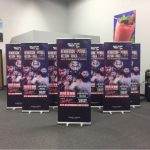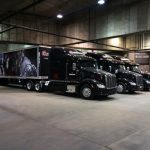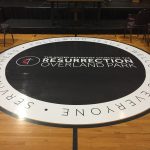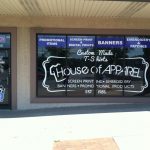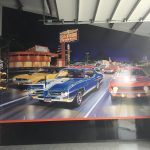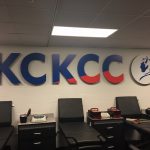
What is Wayfinding Signage?
FEBRUARY 1, 2022| SpeedPro ShawneeCategories
SignageImagine: You’re visiting a city for the first time, and you’re trying to get to a museum or another popular tourist attraction. Your GPS or maps app is helping you find your way somewhat, but you still feel as if you are going around in circles. Suddenly, you look up and see a sign that reads “Art Museum,” which has an arrow pointing in one direction. You head in the direction of the arrow and soon come across another sign with another arrow that guides you. Soon enough, you find your way to the museum or tourist attraction.
If you’ve ever used a sign to help you figure out where to go, whether in a new city, at a stadium, or in a hospital setting, you’ve experienced the benefits of wayfinding signage, also known as wayfaring signs. Wayfinding is designed to help people find what they are looking for, whether they are indoors or out.
WHAT IS WAYFINDING?
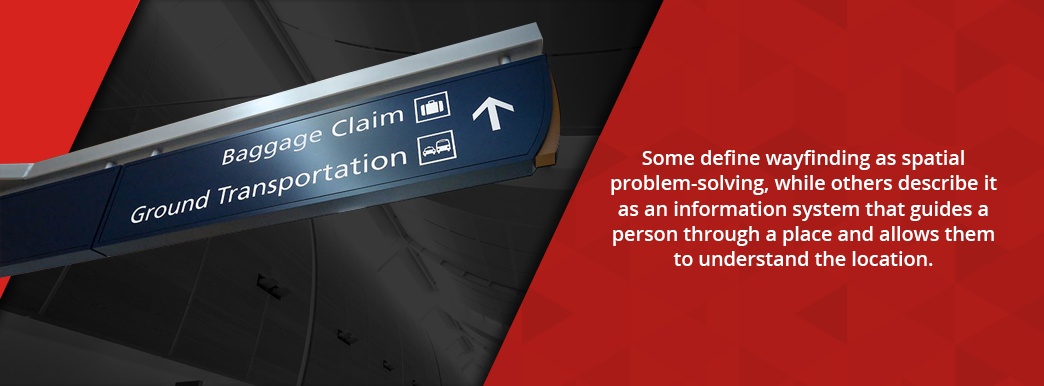
Some define wayfinding as spatial problem-solving, while others describe it as an information system that guides a person through a place and allows them to understand the location. Wayfinding lets you determine where you are and also how to get to your desired location. With wayfinding, you can map out how to get from point A to point B.
Wayfinding is more than hanging up a sign or two and hoping people get to where they’re going. The people responsible for designing wayfinder signs need to consider how people will be moving, whether they’re on foot, riding a bike, or driving a car. The designers of wayfinding systems also need to consider the languages spoken by the people who will encounter the system and the level of literacy they might or might not have.
Wayfinding can involve more than signs. Street or indoor lighting can make an area feel safer and more inviting, sending the signal that it is OK for a person to go down a particular hallway or sidewalk. Visual art can make a road or passageway more attractive, encouraging people to travel a specific way.
The signage used in wayfinding typically falls into four categories.
- Informational: Informational signage helps people find where they’re going by giving them the nuts-and-bolts details they need. Examples of informational wayfinding signs include maps and lists of locations.
- Directional: Direction signage goes hand-in-hand with informational wayfinding signage. Directional signs will point the way to where a person is trying to go. One way to spot a directional sign is to look for an arrow or other instruction such as “turn left.” In some cases, informational signs and directional signs might be the same.
- Identity: An identification sign tells a person they’ve reached their destination. Examples of identity signs include large displays announcing the name of a building at the foot of a driveway. A restroom sign on the door of a public bathroom is another example of an identification sign.
- Regulatory: Some wayfinding signs let people know what they can or can’t do. Regulatory signage lays down the rules and laws. Examples of regulatory signage include “No Parking,” “No Turns” or “Do Not Enter.” A regulatory sign won’t direct a person or help them figure out where to go, but it will give them an idea of what they can or can’t do.
WHY USE WAYFINDING SIGNAGE?
Whether you are designing and using wayfinding signage at a private facility, such as a hospital or shopping mall, or are creating signage to guide pedestrians to the major tourist spots in a big city, there are several reasons to use wayfinding and directional signs.
- Help people get where they need to go: The most significant reason to use wayfinding signs is to help people find locations or figure out which direction to go in. A wayfinding sign can be something simple such as an arrow pointing to the bathrooms at a concert venue. It can also be considerably more complex, such as a map of a city or neighborhood with a star icon to indicate a person’s current location, a scale to show distances, and an index of nearby attractions.
- Communicate with people in a way they can understand: Wayfinding signage lets you reach a wide variety of people. If you’re designing signs for a city, you might need to communicate with people who speak a language other than English or with people who have reading difficulties. You have the option of using multiple languages on a sign or of using graphics and icons as needed, to reach the highest number of people.
- Help people feel comfortable in a new or unfamiliar environment: When people find themselves in a new city or a new building for the first time, they often feel nervous or intimidated. Wayfinding signage can figuratively take a person’s hand and help them become acclimated to a new area. Helpful signs can increase a person’s confidence and let them soon feel that they know exactly where they are, where they’re going and how to get there.
- Create or reinforce a brand or city’s identity: Wayfinding signs do more than tell people where to go or let them know where they are. They can also help define a brand’s identity or to create a “vibe” for a city.
- Encourages people to return: When wayfinding signage is inviting, helpful and makes people feel at ease in a building or city, they are going to be more likely to want to return a place. On the other hand, if people feel uncomfortable or unsure of where they’re going when they go someplace new, it will likely discourage them from coming back.
WHERE DO YOU FIND WAYFINDING SIGNS?
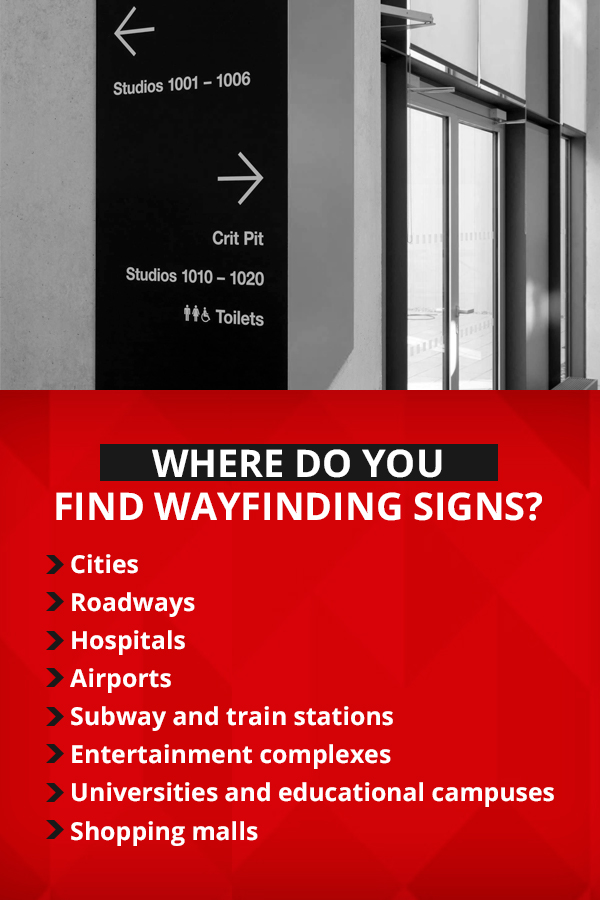 The odds are high you’ve encountered wayfinding signage, even if it didn’t register as wayfinding signage at the time. A few examples of the places where you’re likely to find or use wayfinding and directional signs include the following.
The odds are high you’ve encountered wayfinding signage, even if it didn’t register as wayfinding signage at the time. A few examples of the places where you’re likely to find or use wayfinding and directional signs include the following.
- Cities: Cities around the world use outdoor wayfinding signs to help pedestrians and others navigate their streets. Walk! Philadelphia and Direction Philadelphia are notable examples of a city using wayfinding signage to help people find their way. There are more than 1,000 signs throughout the Center City District of Philadelphia, each of which helps point people toward museums and other historical landmarks. The pedestrian-focused signs feature maps and color-coded districts, while the signs for motorists direct people toward specific areas and landmarks within each district.
- Roadways: Wayfinding signs on roads include large signs along interstates and turnpikes that direct people toward food, gas, or lodging. Roadway directional signs also include signs that tell people which lane to get in to find an exit or that tell people whether they can or must turn from a particular lane.
- Hospitals: Hospitals are often sprawling complexes with multiple buildings and various wards or floors in each building. Wayfinding signs inside hospitals and on the grounds of health care campuses help people find the right floor or room. They also help people figure out where to park and how to get from one building to another.
- Airports: Like health care campuses, airports tend to take up a lot of square footage. Many people traveling to airports are under stress or experiencing a time crunch, as they need to check-in, drop off luggage, go through security, then find their gate. Well-designed and thought-out wayfinding helps take the strain off potentially overly taxed travelers.
- Subway and train stations: People traveling by subway or train need to make sure they are headed in the right direction or on the right train, to begin with. If people are transferring at a station, they need to know how to find the platform their connecting train will be on. In many cases, people also need to be able to find the ticket counter or vending machine to purchase their fares.
- Entertainment complexes: Theaters, cinemas, stadiums, and other entertainment venues use wayfinding signage to direct people to the right entrances or rooms. The signs also help people find the snack stand or bathrooms and allow people to travel through the venue in an orderly fashion.
- Universities and educational campuses: Like hospitals and health care campuses, universities and other schools tend to be large complexes made up of multiple buildings. Within each building are often multiple wings or floors and many offices. Wayfinding at universities and schools allows people to find the correct building, know where to park their cars, and help them get to other landmarks that might be near a school, such as a train station or bus stop.
- Shopping malls: Shopping malls often use directional signage to help people find their way around the interior of the mall and the exterior parking lot. Many malls feature large maps at strategic points, such as near an entrance. The maps usually help people figure out where they are standing in relation to the rest of the mall. Often, the maps have an index or list of stores and codes to help a person find the store they’re looking for and plan a route to reach it.
TYPES OF WAYFINDING SIGNAGE
Wayfinding signs often have one or more goals, based on the category. As their names suggest, informational signs provide information, and directional signs direct people. Identity signs define an area, and regulatory signs let people know what is or isn’t allowed. Beyond the categories of wayfinding signs, it’s also possible to define them by type, such as whether a sign is indoors or outdoors and whether or not it’s digital. Take a closer look at types of wayfinding signage, as well as examples of each.
INDOOR WAYFINDING SIGNS
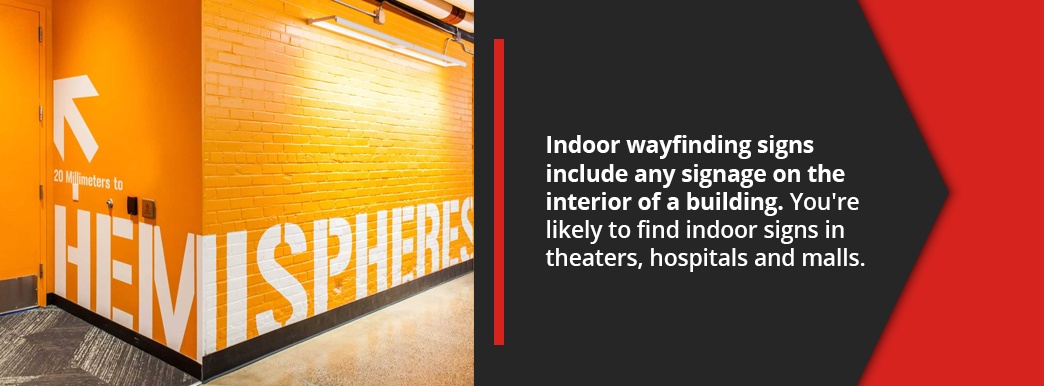
Indoor wayfinding signs include any signage on the interior of a building. You’re likely to find indoor signs in theaters, hospitals, and malls. An indoor sign might be a brand’s logo placed on the door to its office, letting people know they’ve found the right place. Indoor signage can also include wall signs with arrows that point people to the elevator or stairs, the restrooms, or the entrance and exits.
Wayfinding floor decals are other examples of indoor directional signs. Some floor decals might be arrows that point in the direction of a destination, such as a restroom or a snack stand. In some cases, floor decals might be color-coded lines people can follow to help them reach wherever they want to go.
OUTDOOR WAYFINDING SIGNS
Outdoor wayfinding signs can include large branding signs located at the entrance of a parking lot or driveway. The large signs identify the company or building, letting people know they’ve found the right place. Wayfinding signs might also be in a parking lot. For example, signs with letters or numbers printed on them help people figure out where they have parked. When leaving a mall or another venue, a person can find their car easily by remembering the letter or number they parked near.
Outdoor wayfinding signs also help people figure out what they can or can’t do. In a parking lot, a sign with the International Symbol of Access on it lets people quickly identify which parking spots are for disabled people. A “Do Not Enter” sign in an area near the loading dock or down a one-way street lets people know they need to turn around.
DIGITAL WAYFINDING SIGNS
Digital wayfinding signs might be indoors or outdoors. They are ideal for places that change frequently or for creating a more interactive experience for people using the sign. For example, some shopping malls have switched over to digital maps. A person can type in the name of the store they’re looking for, and the digital map will track it down. Next, the map provides them with directions for reaching it from where they are standing.
Many subway stations around the world feature non-digital maps at the entranceways and in the tunnels to help people plan their routes. The Paris Metro has digital maps and trip planners at some stations. To use the trip planner, you tap in your destination. It then returns a route for you, telling you which line to take, which direction to go in, where to transfer and what your final stop will be. The trip planner is available in seven languages, so you can use it even if you don’t speak French.
HOW TO CREATE EFFECTIVE WAYFINDING SIGNS
The essential thing to remember when crafting effective wayfinding signs is what the user of the signs will need. You want the signs to look good and to be visually appealing. But, if you don’t remember the needs of the people using them, the signage will end up being little more than decoration. Some questions to ask when creating wayfinding signs include the following.
- Who will use the signs? Are you trying to connect with visitors or tourists? Or is your goal to provide information to people who might use the building daily or live in a city?
- What languages do you need? If you are creating signs for visitors or tourists to use, consider the most popular languages spoken by visitors to your area. If you have a large population of speakers of a language other than English in your area, you might want to create bilingual signs.
- How quickly do you get the message across? People in transit need to be able to decode and decipher a sign without delay. Too much information creates clutter and confuses the issue.
SPEEDPRO CAN HELP MAKE PEOPLE FEEL WELCOME WITH WAYFARING SIGNAGE
From helping people find their way to let them know they’ve arrived, wayfinding signage helps you create a positive first impression with visitors, shoppers, fans, and others. If you’re not sure where to get started when it comes to creating wayfinding signs, or if you have a few ideas, but aren’t sure where to go next, SpeedPro can help. Contact SpeedPro Shawnee to find out more today.


